
Foreign direct investment is a cross-border investment in which a resident or company of one country has significant control or influence over the management of an enterprise in another country. (These, on the other hand, are the most self sufficient economies in the world.)
To determine the countries where foreigners control the largest share of the economy, 24/7 Wall St. reviewed foreign direct investment net inflows and gross domestic product data from the World Bank. Countries were ranked by the percentage of foreign direct investment of total GDP. GDP and FDI figures are in current U.S. dollars for 2020. Macao’s data is for 2019. There were 195 countries with data. Other information came from sources that included insurance company Lloyds of London and the U.S. State Department.
Some of the nations on the list are tax havens, such as the Republic of the Seychelles, the Cayman Islands, and Luxembourg. These countries offer offshoring corporate structures, no or low tax policies, political stability, and little accountability.
Other nations are attracting foreign direct investment because they are rich in resources such as oil, timber, natural gas, and bauxite. These nations include Mauritania, Sierra Leone, and Mongolia. A $20 billion liquefied natural gas project in Mozambique is the single largest FDI in Africa, according to Foreign Affairs.
Infrastructure needs top the list of countries such as Somalia and Macao, and China is pouring its burgeoning wealth into infrastructure projects in Grenada, Congo, and Guyana. (Find out if any of the countries on this list are also among the poorest countries in the world.)
Nations that gained independence from colonial powers or from countries that held them as possessions have retained economic ties with their former occupiers, such as the African nation São Tomé and Principe with Portugal and the Pacific island nation of Palau and the United States.
As a point of reference, foreign direct investment as a percentage of gross domestic product in the U.S. is 1.01%, and the total amount for foreign direct investment is $211.29 billion, the second highest in the world. For China, foreign direct investment as a percentage of GDP is 1.44%, and the total foreign direct investment is $212.47 billion, the highest among 195 nations on the list.
Click here to see the countries dominated by foreign investment
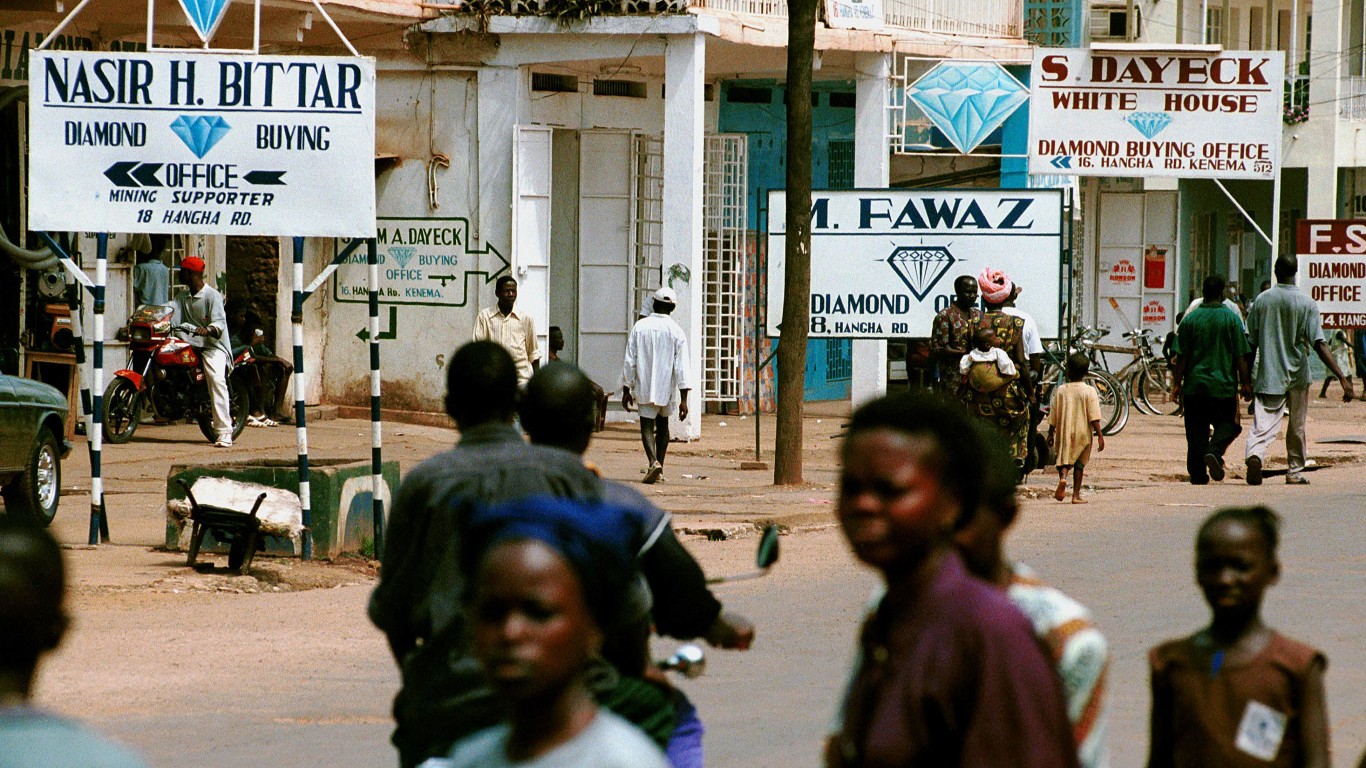
25. Sierra Leone
> Foreign direct investment as pct of GDP: 8.58%
> Foreign direct investment: $348.7 million — #87 lowest of 195
> GDP: $4,063.3 million — #38 lowest of 195
The west African country is rich in natural resources such as iron ore and bauxite and has attracted foreign investors such as American and Chinese companies. China is funding a hospital, a hydroelectric dam, and a rubber production project. Other foreign investors include Nigeria, Sweden, Mauritius, Belgium, and Germany.
With some exceptions, foreign companies may own or invest in Sierra Leonean entities. Sierra Leone presents a challenge to foreign investors because of inadequate infrastructure and corruption. U.S. foreign direct investment in Sierra Leone was $12 million in 2019, unchanged from the previous year.
[in-text-ad]

24. Lebanon
> Foreign direct investment as pct of GDP: 9.01%
> Foreign direct investment: $2,860.8 million — #51 highest of 195
> GDP: $31,735.2 million — #98 lowest of 195
More than 70% of foreign investment was in the form of real estate acquisitions, based on estimates from various sources, including the Central Bank of Lebanon, the Financial Times and Moody’s. Syrians and Saudis were the top foreign investors in Lebanese real estate.
Europe accounted for 51% of foreign companies in Lebanon in 2018. France, the former colonial overseers of Lebanon, held the largest share, followed by Germany. European projects are focused on the agro-food, oil and gas, and trade sectors. There is growing concern about political instability in the country, sovereign debt issues, and the impact of the civil war in neighboring Syria.

23. Somalia
> Foreign direct investment as pct of GDP: 9.30%
> Foreign direct investment: $464.0 million — #95 lowest of 195
> GDP: $4,988.4 million — #42 lowest of 195
The east African nation of Somalia, devastated by years of civil unrest and turmoil, has put out the welcome mat for foreign investment. At the top of the nation’s list is improving its infrastructure. Turkey is among the foreign investors helping to rebuild the nation. Somalia developed a 10-year plan for building roads, bridges, airports, and ports in 2016.
The other sectors the nation is seeking to expand are livestock, farming, fisheries, energy, and banking. Turkey, Germany, and the U.S. are the main investors in Somalia through bilateral trade agreements.

22. Palau
> Foreign direct investment as pct of GDP: 9.31%
> Foreign direct investment: $24.0 million — #43 lowest of 195
> GDP: $257.7 million — #5 lowest of 195
The Palau government relies on financial assistance from the United States under the Compact of Free Association with the U.S., which went into effect after the Pacific island nation became independent in 1994. The U.S. provided Palau with about $700 million in aid in the first 15 years of the agreement in return for unrestricted access to its land and waterways for strategic purposes. The nation’s constitution forbids foreigners from acquiring title to land or water in Palau, but it allows them to lease.
[in-text-ad-2]
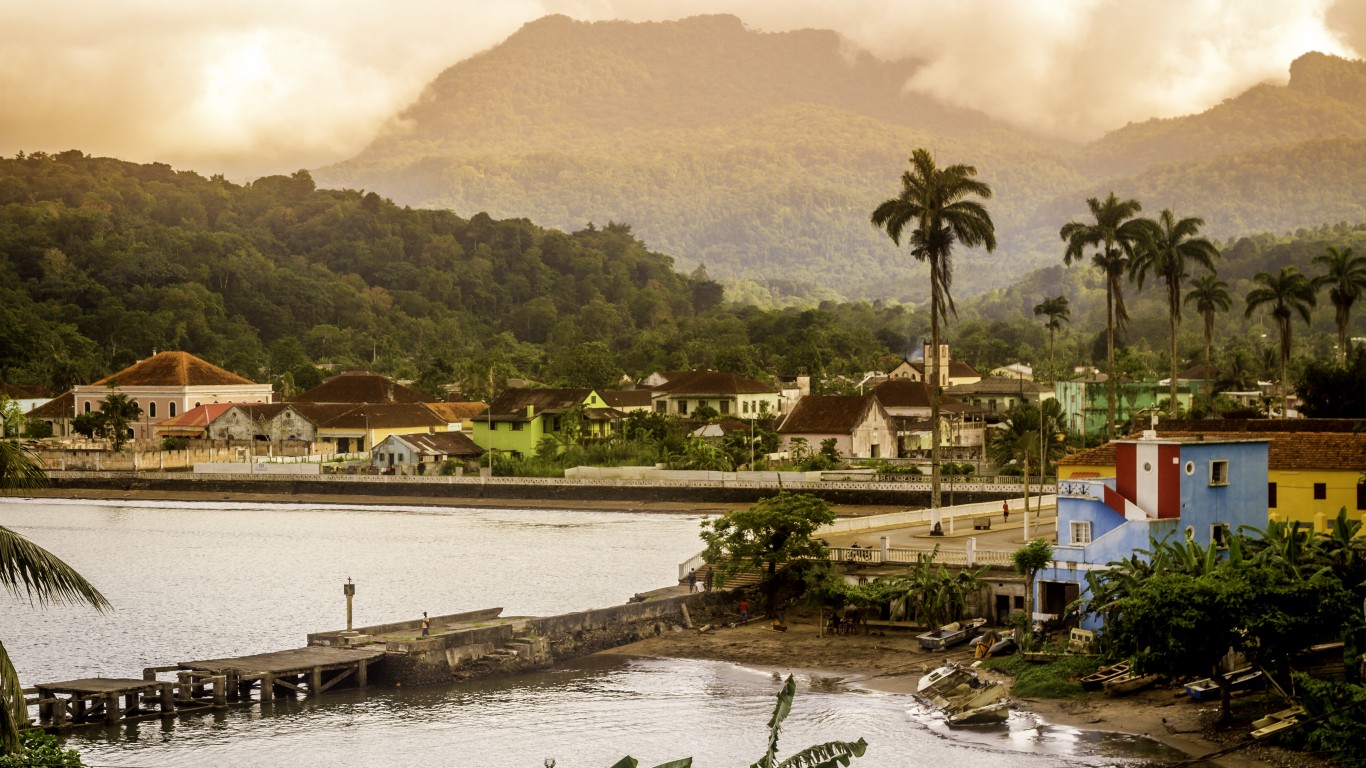
21. São Tomé and Principe
> Foreign direct investment as pct of GDP: 9.96%
> Foreign direct investment: $47.1 million — #54 lowest of 195
> GDP: $472.9 million — #6 lowest of 195
São Tomé and Principe, located off the western equatorial coast of Central Africa, gained independence from Portugal in 1975 and retains strong economic ties with its former colonial master. In February 2022, Portuguese company Visabeira bought a 51% stake in the country’s telecom Companhia Santomense de Telecomunicações.
The African nation is seeking to modernize its port infrastructure, and in 2020, China announced it was funding airport rehabilitation in São Tomé and Príncipe. Foreign investment has been slow, however, because of the nation’s small domestic market, inadequate infrastructure, high credit costs, and an unreliable and expensive electrical grid.

20. Gambia, The
> Foreign direct investment as pct of GDP: 10.15%
> Foreign direct investment: $189.6 million — #77 lowest of 195
> GDP: $1,868.1 million — #24 lowest of 195
The western African nation’s economic growth has been stoked by financial services, telecommunication, and construction. The Gambia has created a government agency tasked with attracting foreign investment. There are no restrictions on ownership of businesses by foreign investors in most sectors of the Gambian economy, though foreign investors complain about lack of transparency and excessive bureaucracy. There are no restrictions on foreign investors converting or repatriating funds.
Gambia’s major trading partners are the Ivory Coast and China. The United States, Germany, India, and the United Kingdom also are significant trading partners.
[in-text-ad]

19. Montenegro
> Foreign direct investment as pct of GDP: 11.06%
> Foreign direct investment: $527.3 million — #96 highest of 195
> GDP: $4,769.9 million — #41 lowest of 195
Most of foreign direct investment in Montenegro, part of former Yugoslavia, has come from NATO member countries, as well as Russia and China. The sectors attracting most of the FDI are tourism, real estate, energy, telecommunications, banking, and construction. Foreign investors are drawn by the nation’s low tax rate — at 9% one of the lowest in Europe — and its tourism potential. Deficient infrastructure and a lack of skilled workers limit investment in Montenegro.
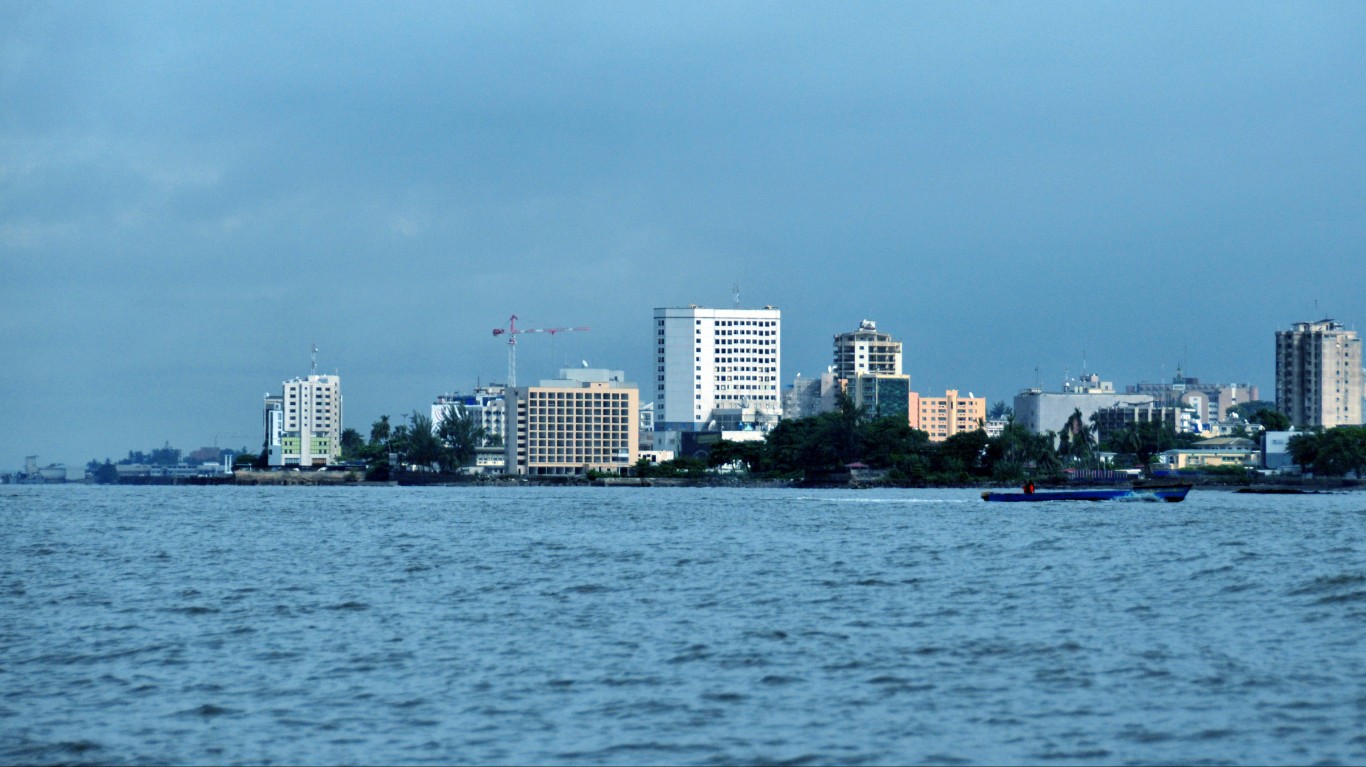
18. Gabon
> Foreign direct investment as pct of GDP: 11.21%
> Foreign direct investment: $1,716.5 million — #65 highest of 195
> GDP: $15,316.8 million — #75 lowest of 195
Gabon, on the west coast of Central Africa, has bilateral investment treaties with, among other countries, China, Germany, Italy, and the Republic of Korea. Gabon’s investment policy gives foreign companies operating in the country the same rights as domestic businesses. Businesses are shielded from expropriation or nationalization without appropriate compensation, which is determined by a third party.

17. Estonia
> Foreign direct investment as pct of GDP: 11.54%
> Foreign direct investment: $3,536.2 million — #45 highest of 195
> GDP: $30,650.3 million — #97 lowest of 195
The Baltic nation has flourished since the collapse of the Soviet Union in 1991. The services sector is Estonia’s most developed — transport and logistics, biotechnology, and financial services account for about two-thirds of its GDP. Estonia also has been boosted by its information technology and green energy sectors.
The main investor nations in Estonia are Sweden, Finland, the Netherlands, and Lithuania. The country’s banking sector consists of 14 banks, five of which operate as branches of foreign credit institutions. Foreign capital holds 85% of banking sector assets.
[in-text-ad-2]
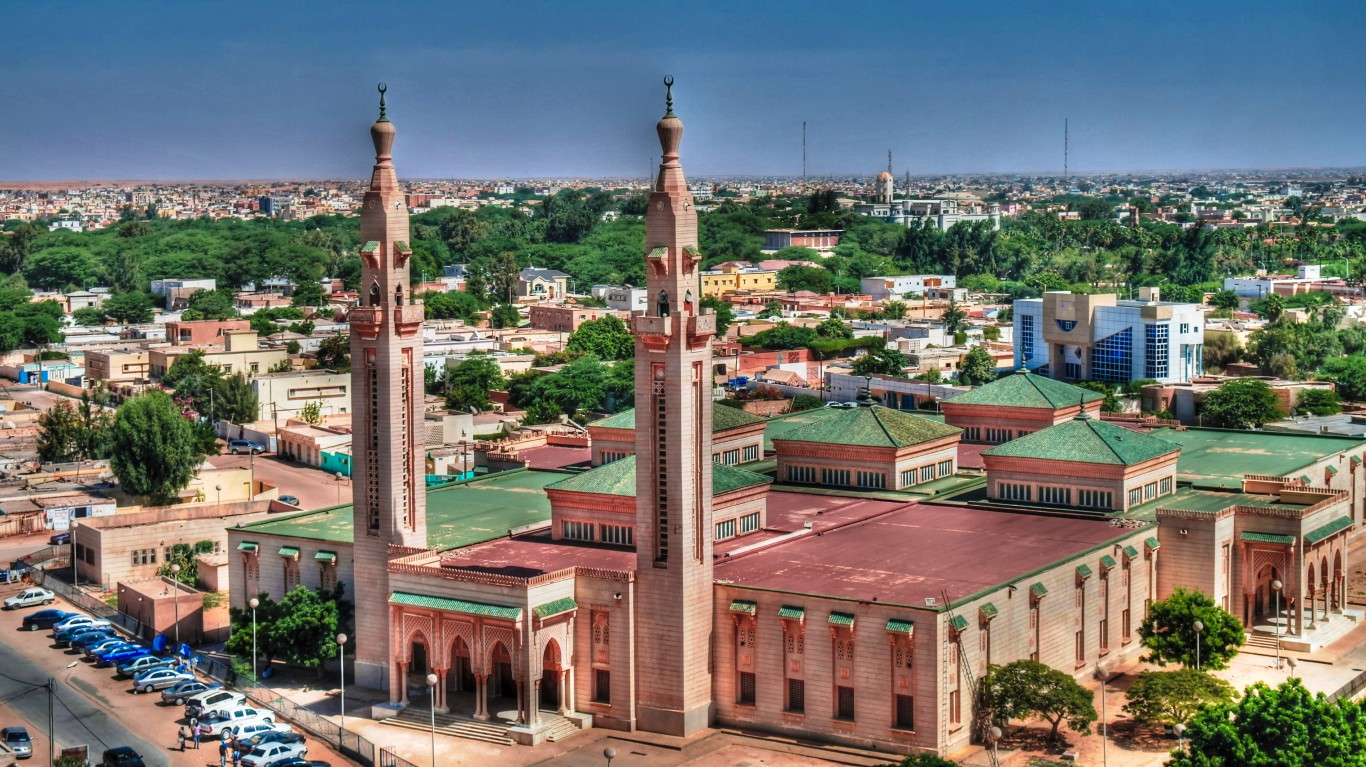
16. Mauritania
> Foreign direct investment as pct of GDP: 11.73%
> Foreign direct investment: $927.9 million — #81 highest of 195
> GDP: $7,913.7 million — #50 lowest of 195
Mauritania is located in the northwestern part of Africa, and foreign countries are investing in oil exploration, iron ore and gold mining, mobile-phone licenses, and construction. China is becoming an investor in Mauritania. European nations such as Hungary and France are investing in infrastructure and telecommunications.
In 2019, a joint-venture was signed between infrastructure company Arise Mauritania and Meridiam, a French investment fund, to support modernizing the Nouakchott port through a public-private partnership. Mauritania has improved access to credit information and contract enforcement, but the nation is hampered by political and security instability and corruption, among other issues.

15. Maldives
> Foreign direct investment as pct of GDP: 11.78%
> Foreign direct investment: $440.7 million — #94 lowest of 195
> GDP: $3,742.8 million — #36 lowest of 195
The developing island nation in the Indian Ocean, a getaway destination for the rich and famous, attracts most of its foreign direct investment via tourism, followed by the transport and telecom sectors. Most of the tourism investment is in resort management. India is the largest investor in the Maldives, which opened to foreign investment in the late 1980s. Foreign companies can own land, but ambiguous foreign-investment laws discourage investors. Most land is owned by the government and then leased to private owners or developers.
[in-text-ad]
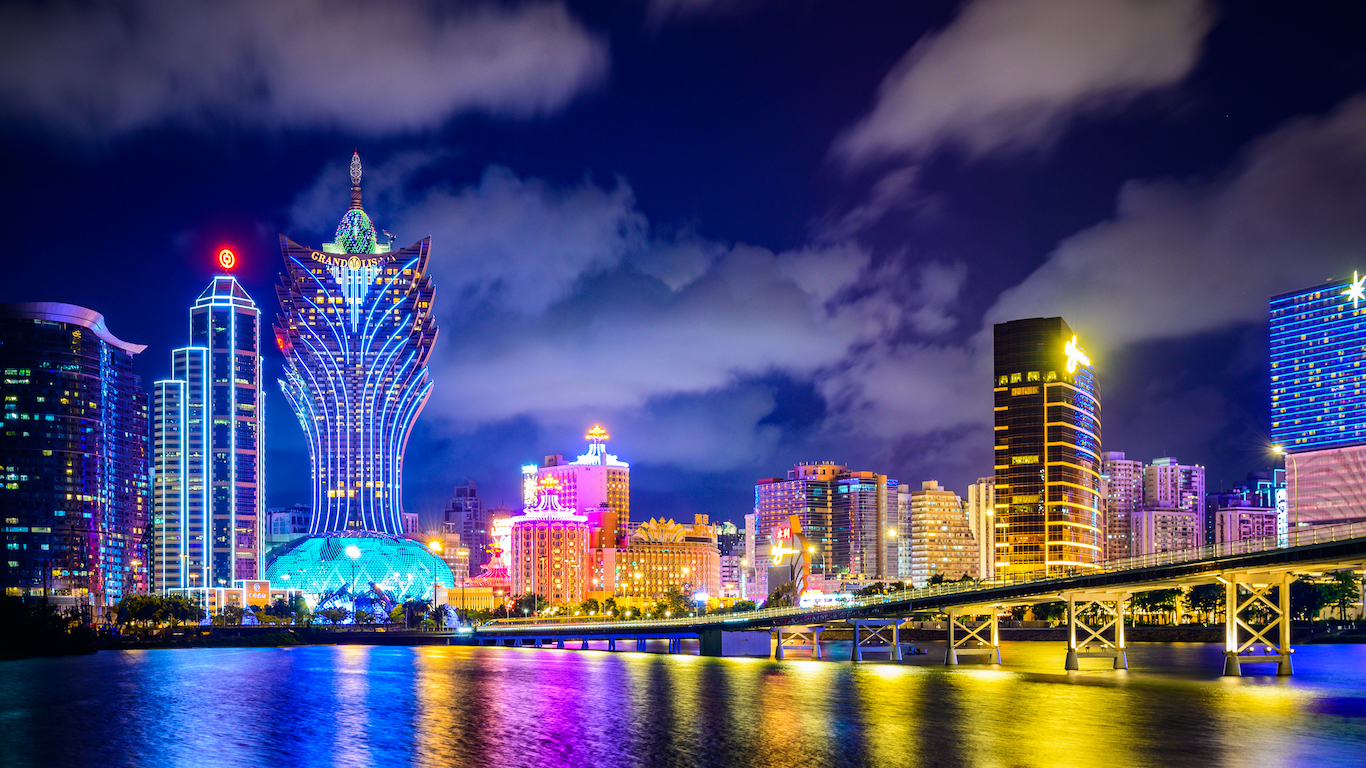
14. Macao SAR, China
> Foreign direct investment as pct of GDP: 11.79%
> Foreign direct investment: $6,508.5 million — #32 highest of 195
> GDP: $55,204.8 million — #81 highest of 195
Foreign investments in Macao, the special administrative region of China and former Portuguese colony, are concentrated in the gambling, banking, and tourism sectors (hotel industry). The main investing countries are Hong Kong, British Virgin Islands, Cayman Islands, Mainland China, Portugal, and the U.S.
Among the projects underway are casinos, hotels, airport extension, and bridges. In September 2016, the government of Macao and China announced a five-year development plan that included establishing trade cooperation between Mainland China and Portuguese-speaking countries. Macao does not impose restrictions on capital flows and foreign exchange operations, but exporters are required to convert 40% of foreign currency earnings into Macao’s currency.
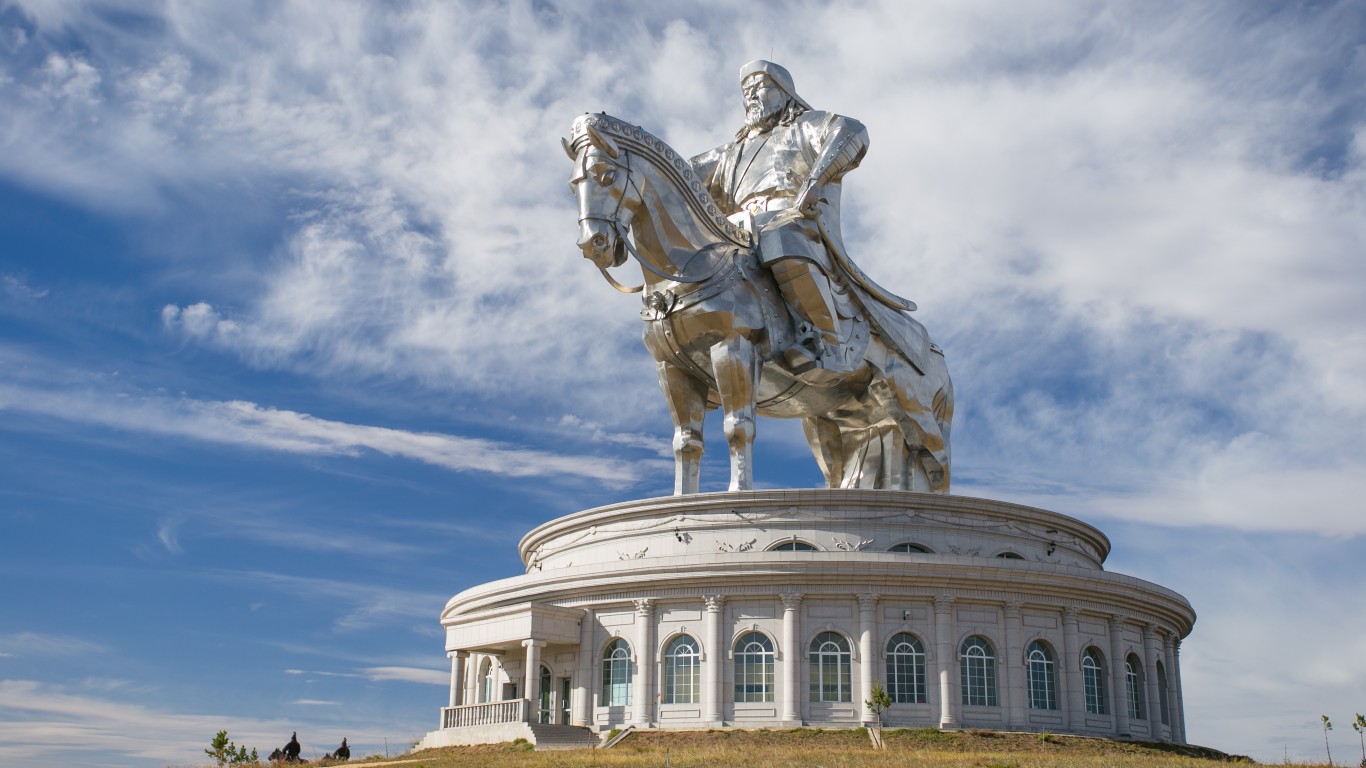
13. Mongolia
> Foreign direct investment as pct of GDP: 12.91%
> Foreign direct investment: $1,719.1 million — #64 highest of 195
> GDP: $13,313.0 million — #67 lowest of 195
Mongolia’s economic growth has been dependent on trade of commodities such as copper, whose prices and demand crashed during COVID-19. The pandemic also forced the closure of its border with China, one of its main trading partners.
The sectors attracting the most foreign investment are mining, oil, and construction. Strip mining in Mongolia has become an environmental problem in that country. Mongolia is also building its first oil refinery, expected to be commissioned in 2022, with financial and technical assistance from India. Mongolia’s main investment partners are Russia, Canada, Great Britain, and the United States.

12. Cambodia
> Foreign direct investment as pct of GDP: 14.04%
> Foreign direct investment: $3,624.6 million — #43 highest of 195
> GDP: $25,808.6 million — #96 lowest of 195
Political stability and open investment policies have made Cambodia an attractive destination for foreign investors. Incentives include 100% foreign ownership of companies; corporate tax holidays for up to eight years; duty-free import of capital goods; and no restrictions on capital repatriation. Like many countries on this list, Cambodia has created special economic zones (23 of them) that provide companies with ready access to land, infrastructure, and other services.
The economic sectors receiving most of the FDI inflows are construction, clothing, electrical and electronic components, and agriculture. The countries investing most in Cambodia are China, South Korea, Vietnam, Japan, and Singapore.
[in-text-ad-2]

11. Grenada
> Foreign direct investment as pct of GDP: 14.28%
> Foreign direct investment: $148.8 million — #68 lowest of 195
> GDP: $1,042.1 million — #13 lowest of 195
The tiny Caribbean island saw FDI inflows rise during the pandemic. Not surprisingly, tourism attracts most foreign investment, followed by the construction sector. The nation’s Citizenship-by-Investment program offers a basket of benefits — including a fast track to citizenship — to attract more investments. There are no restrictions on foreign ownership or control.
The largest foreign investors are Trinidad and Tobago, the U.S., and Great Britain. Grenada has signed up for China’s Belt and Road funding, and China has submitted a development plan that includes projects such as a highway and a railway.

10. Seychelles
> Foreign direct investment as pct of GDP: 16.52%
> Foreign direct investment: $175.1 million — #73 lowest of 195
> GDP: $1,059.9 million — #14 lowest of 195
The Seychelles is another exotic getaway for the well-heeled. The archipelago of 115 islands east of Africa has become the preferred tax haven for businesses. The business-friendly nation is tax-free and has strong privacy rules.
The offshore legislation introduced in 1994 has boosted the fast-growing offshore service industry, which mostly focused on offshore activities such as the incorporation of international business companies, trusts, insurance, investment fund management, banking services, and other services. Tourism is also a major economic component, indirectly accounting for more than half of GDP.
[in-text-ad]
9. Guyana
> Foreign direct investment as pct of GDP: 21.83%
> Foreign direct investment: $1,194.5 million — #71 highest of 195
> GDP: $5,471.3 million — #43 lowest of 195
Guyana, on the northern mainland of South America, has lured FDI through its transportation, communications, and agricultural sectors. However, energy has been drawing foreign investors recently to mining and hydroelectric projects. The China Railway First Group is the main investor of the Amaila Falls hydroelectric project. British Whitefox Technology and Brazilian Green are bankrolling the construction of a bioethanol processing factory.
The discovery of oil reserves off the Guyana coast by Exxon in 2015 also increased FDI. The United States is the biggest investor in Guyana. Corruption and crime are deterrents for foreign investment.
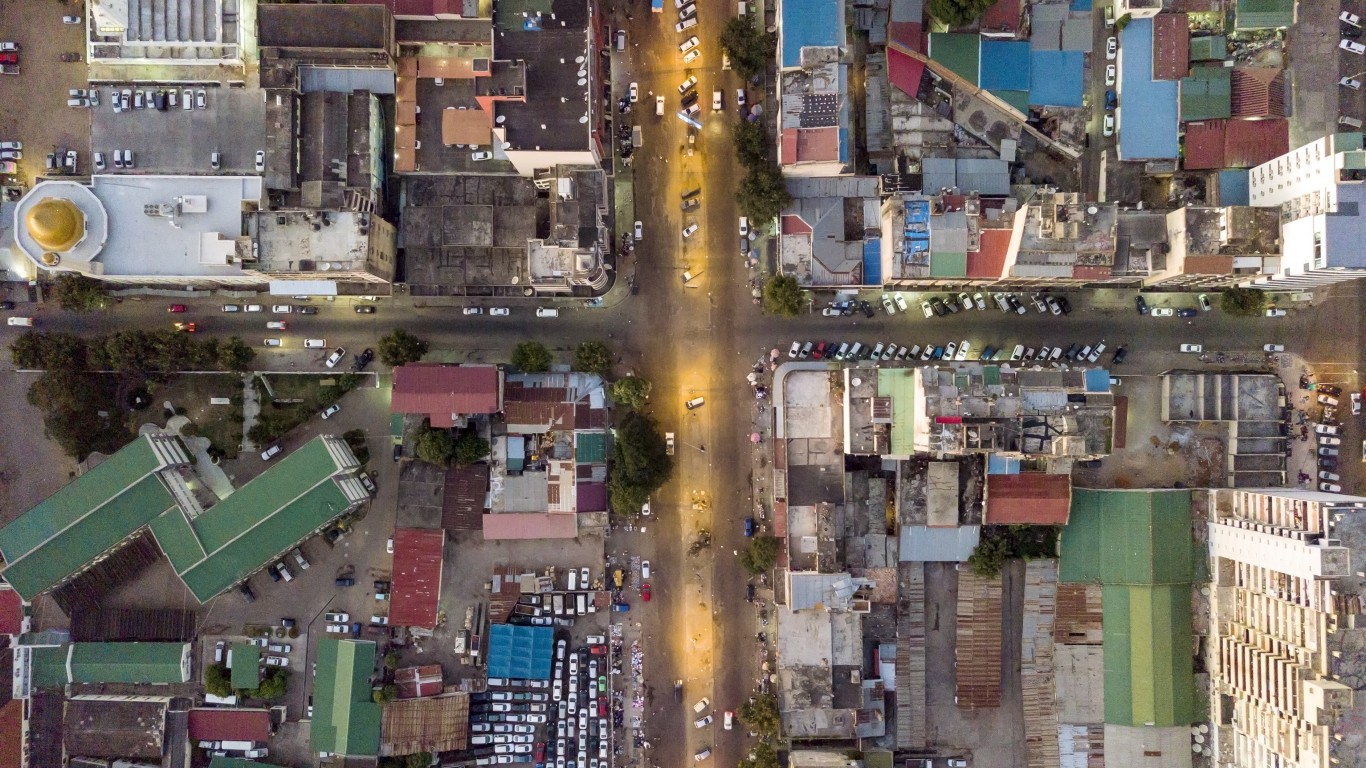
8. Mozambique
> Foreign direct investment as pct of GDP: 22.74%
> Foreign direct investment: $3,187.9 million — #49 highest of 195
> GDP: $14,019.4 million — #70 lowest of 195
The island nation east of Africa has been attracting increasing amounts of FDI, drawn by the country’s mining, hydrocarbon, energy, logistics, retail, and real estate sectors. There is also growing interest in the coal industry.
Mozambique’s main foreign investors are the United Arab Emirates, Mauritius, China, Italy, the United States, South Africa, Portugal, and Turkey. France is a leading investor in a liquefied natural gas project, which at $20 billion is the single largest FDI in Africa. Causes of concern for foreign investors are an Islamic insurgency in the Cabo Delgado area, an unstable political and security environment, substandard infrastructure, and vulnerability to natural disasters.

7. Singapore
> Foreign direct investment as pct of GDP: 25.72%
> Foreign direct investment: $87,445.1 million — #6 highest of 195
> GDP: $339,998.5 million — #37 highest of 195
Singapore is one of the world’s friendliest countries for business. The Asian city-state’s advantages include a simple regulatory system, tax incentives, political stability, and virtually no corruption. It is the sixth-largest recipient of FDI inflows in the world, behind China, the U.S., Hungary, Hong Kong, and Germany.
The U.S., Cayman Islands, British Virgin Islands, and the Netherlands are the main investors in Singapore. The financial and insurance sectors are the main recipients of FDI. The wholesale and retail trade and manufacturing areas also draw investment.
[in-text-ad-2]

6. Malta
> Foreign direct investment as pct of GDP: 29.95%
> Foreign direct investment: $4,387.1 million — #38 highest of 195
> GDP: $14,647.4 million — #72 lowest of 195
The island nation in the Mediterranean Sea has leveraged its geographic position, skilled and bilingual workforce, membership in the European Union, and competitive cost structure to attract FDI. The main contributors to FDI inflows are the financial and insurance sectors. Other areas for investment include electronics, pharmaceuticals, and communications. The Maltese government offers tax incentives for investments in industrial projects and has a free trade zone.
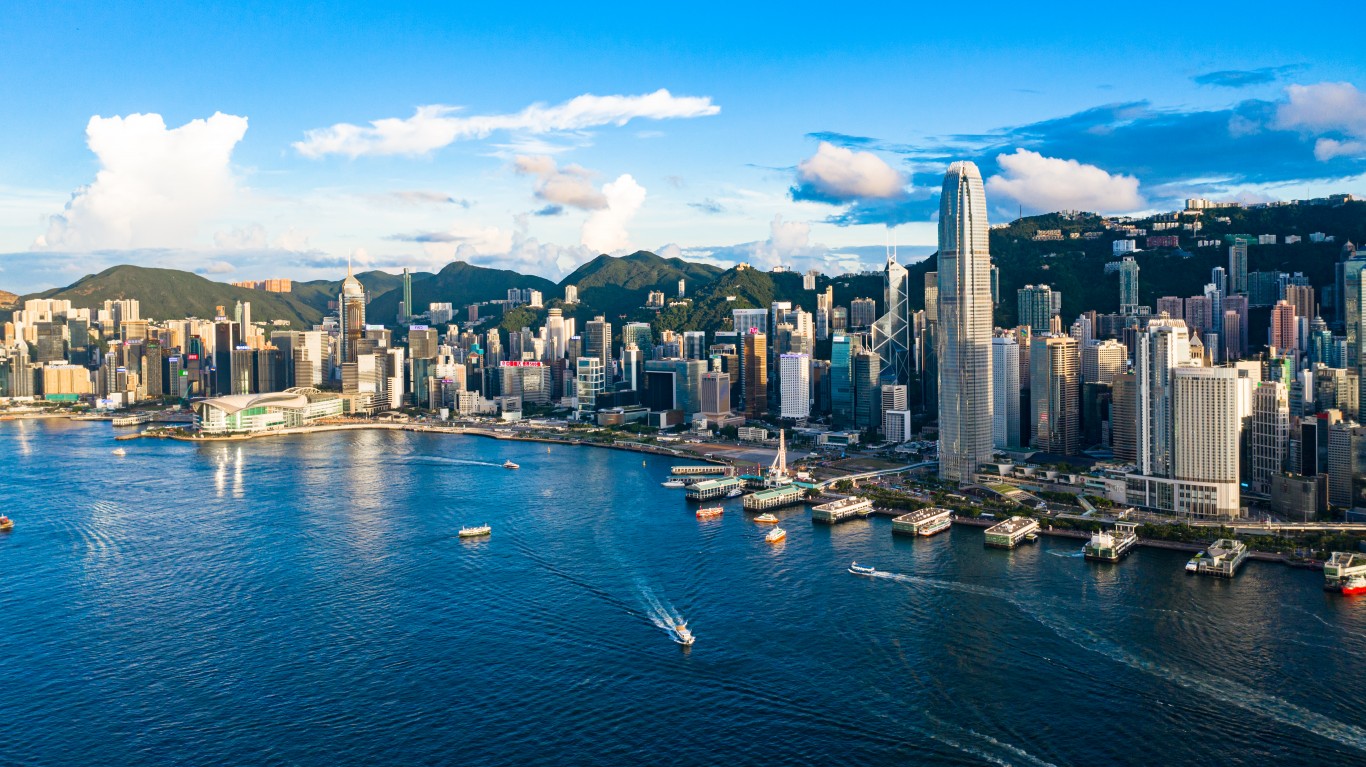
5. Hong Kong SAR, China
> Foreign direct investment as pct of GDP: 33.89%
> Foreign direct investment: $117,452.3 million — #4 highest of 195
> GDP: $346,585.9 million — #36 highest of 195
Hong Kong has long been a business-friendly destination for FDI, though there is some concern about the future of a favorable business environment as China exerts greater control over the day-to-day lives in Hong Kong. Finance, real estate, and insurance are major sectors of FDI.
The main investing nations are China, the British Virgin Islands, the United Kingdom, Bermuda, and Japan. Hong Kong’s advantages for FDI include access to the massive Chinese market, simple tax system, good infrastructure, and judicial security.
[in-text-ad]
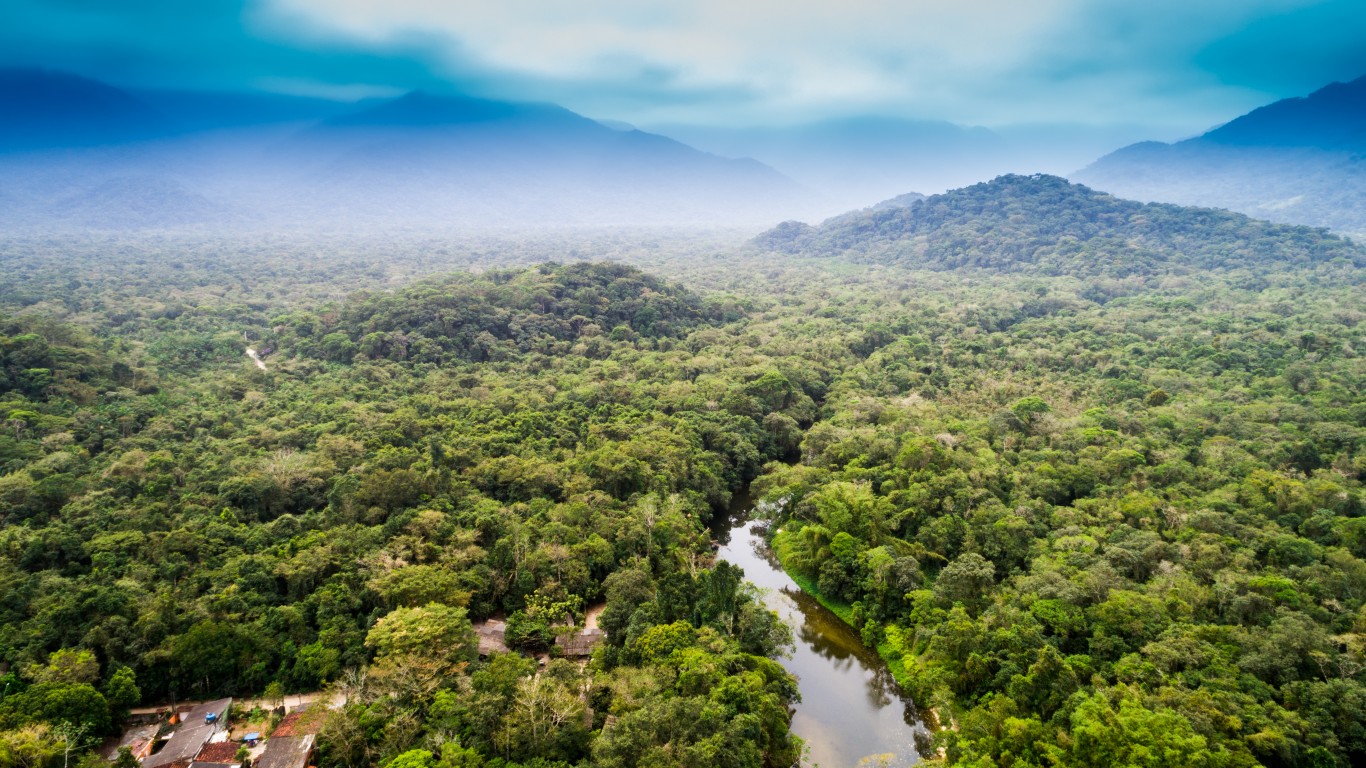
4. Congo, Rep.
> Foreign direct investment as pct of GDP: 39.42%
> Foreign direct investment: $4,015.5 million — #42 highest of 195
> GDP: $10,187.1 million — #54 lowest of 195
The African nation’s rich trove of oil, timber, and other natural resources has attracted FDI. The modernization of the transport passageway between the cities of Brazzaville and Pointe Noire will boost the nation’s importance in the region.
China, which has been raising its investment profile in Africa in recent years, is a major investor in the Republic of Congo, rebuilding the country’s port, road, rail, and electricity infrastructure. France and the United States also are investors in the African nation.

3. Luxembourg
> Foreign direct investment as pct of GDP: 84.72%
> Foreign direct investment: $62,144.6 million — #9 highest of 195
> GDP: $73,353.1 million — #69 highest of 195
Luxembourg is one of the most favorable tax havens in the world. More than 340 companies have set up subsidiaries in Luxembourg, seeking tax relief. Those companies include Amazon, Apple, AIG, Heinz, IKEA, Pepsi Bottling Group, and Staples.
Luxembourg emerged as a tax haven in the 1960s, when the European country became a locus for the off-shore trade of European bonds. Companies looking to issue debt come to Luxembourg because it does not have a withholding tax and does not require bond issuers to publish a prospectus.
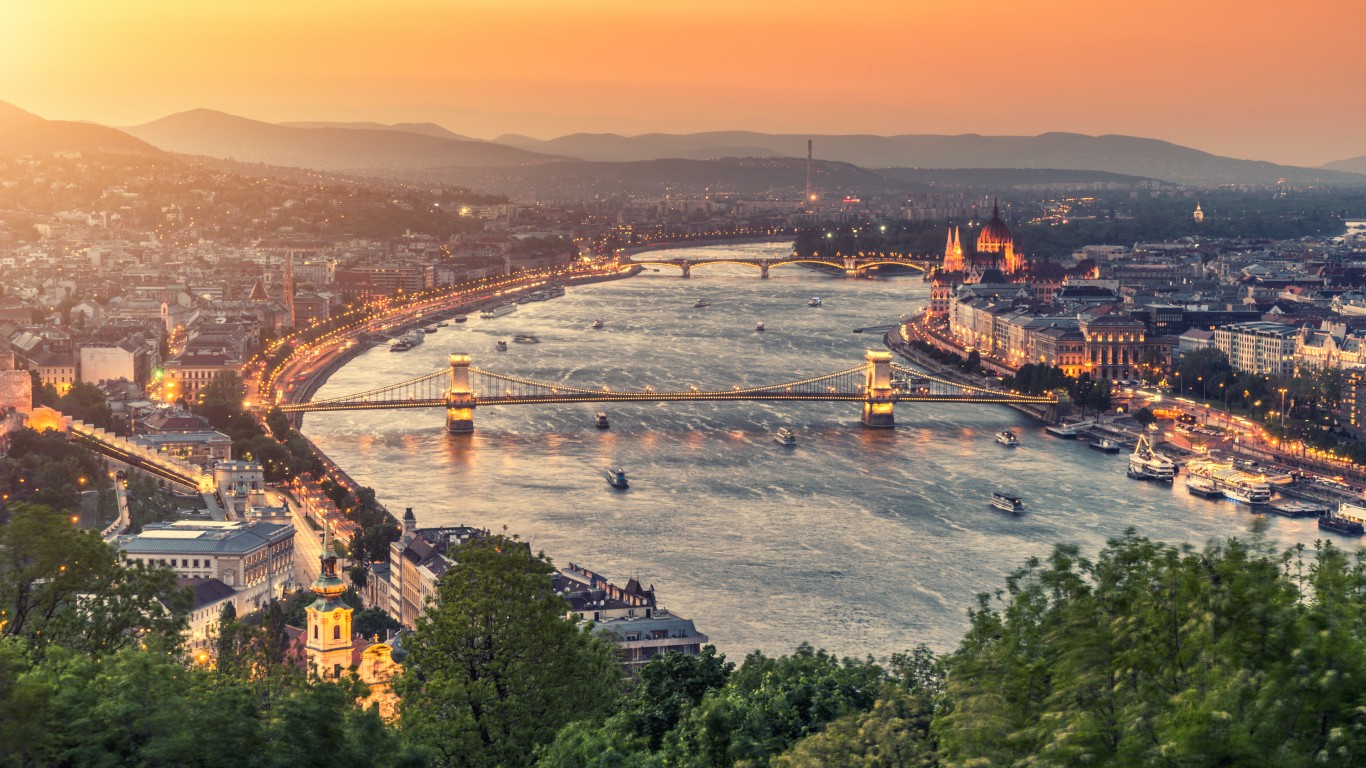
2. Hungary
> Foreign direct investment as pct of GDP: 108.42%
> Foreign direct investment: $168,928.3 million — #3 highest of 195
> GDP: $155,808.4 million — #55 highest of 195
Hungary, located in central Europe, has attracted FDI inflows because of its location, infrastructure, skilled and inexpensive workforce. It also has one of Europe’s lower corporate tax rates. The main investors are Canada, the Cayman Islands, the Netherlands, and Germany.
FDI has been steered toward financial services, manufacturing, trade, and real estate. Foreign investors have raised concerns over the country’s shortage of qualified labor because of a decline in demographics.
[in-text-ad-2]
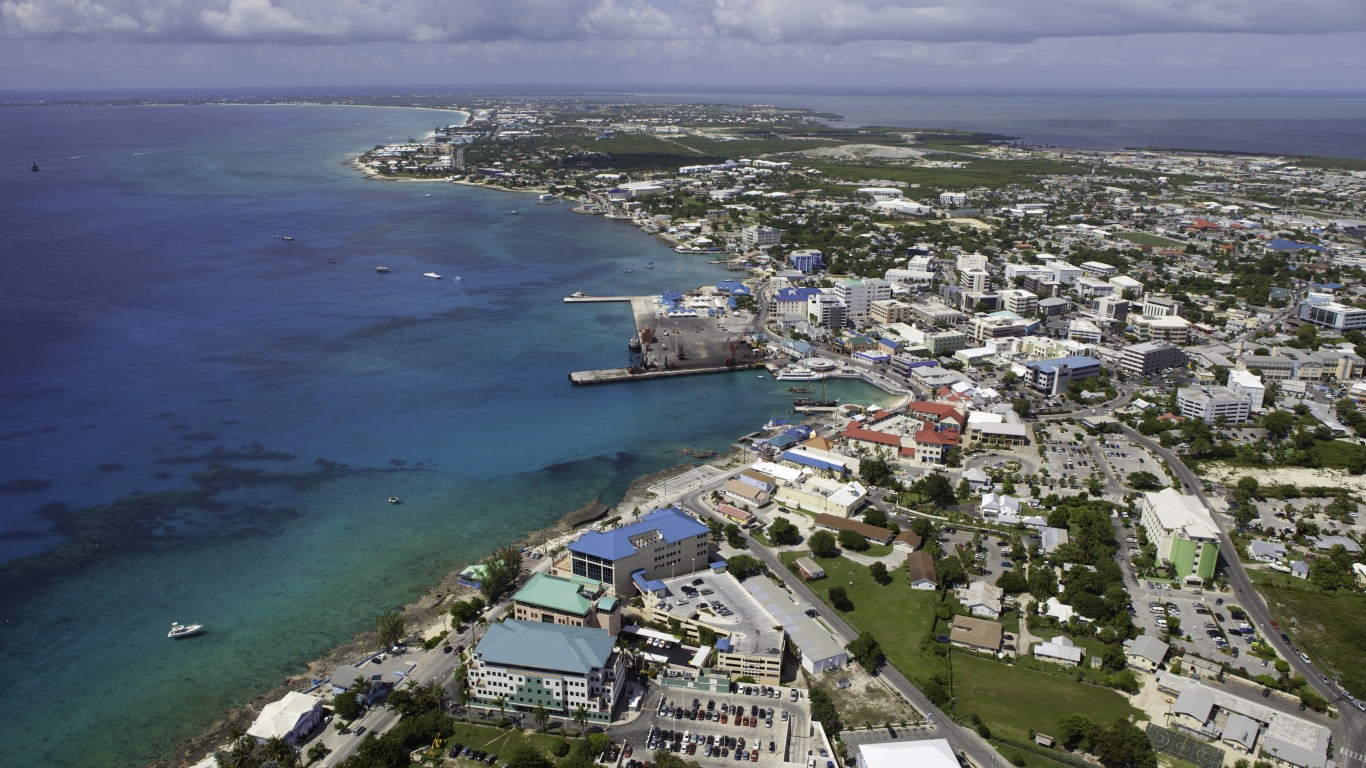
1. Cayman Islands
> Foreign direct investment as pct of GDP: 422.44%
> Foreign direct investment: $23,621.0 million — #18 highest of 195
> GDP: $5,591.6 million — #44 lowest of 195
The offshore financial services sector is a major part of the economy of the Cayman Islands, one of the world’s most fully developed tax havens. No direct taxes are levied on domestic companies and residents in the Cayman Islands, and no levy is imposed on dividends, interests, gifts, and inheritance. There are no currency controls. Most of the government’s revenue is generated from indirect taxes. The Cayman Islands, located in the western Caribbean Sea, is politically stable and has a bustling tourism industry.
Want to Retire Early? Start Here (Sponsor)
Want retirement to come a few years earlier than you’d planned? Or are you ready to retire now, but want an extra set of eyes on your finances?
Now you can speak with up to 3 financial experts in your area for FREE. By simply clicking here you can begin to match with financial professionals who can help you build your plan to retire early. And the best part? The first conversation with them is free.
Click here to match with up to 3 financial pros who would be excited to help you make financial decisions.
Have questions about retirement or personal finance? Email us at [email protected]!
By emailing your questions to 24/7 Wall St., you agree to have them published anonymously on a673b.bigscoots-temp.com.
By submitting your story, you understand and agree that we may use your story, or versions of it, in all media and platforms, including via third parties.
Thank you for reading! Have some feedback for us?
Contact the 24/7 Wall St. editorial team.
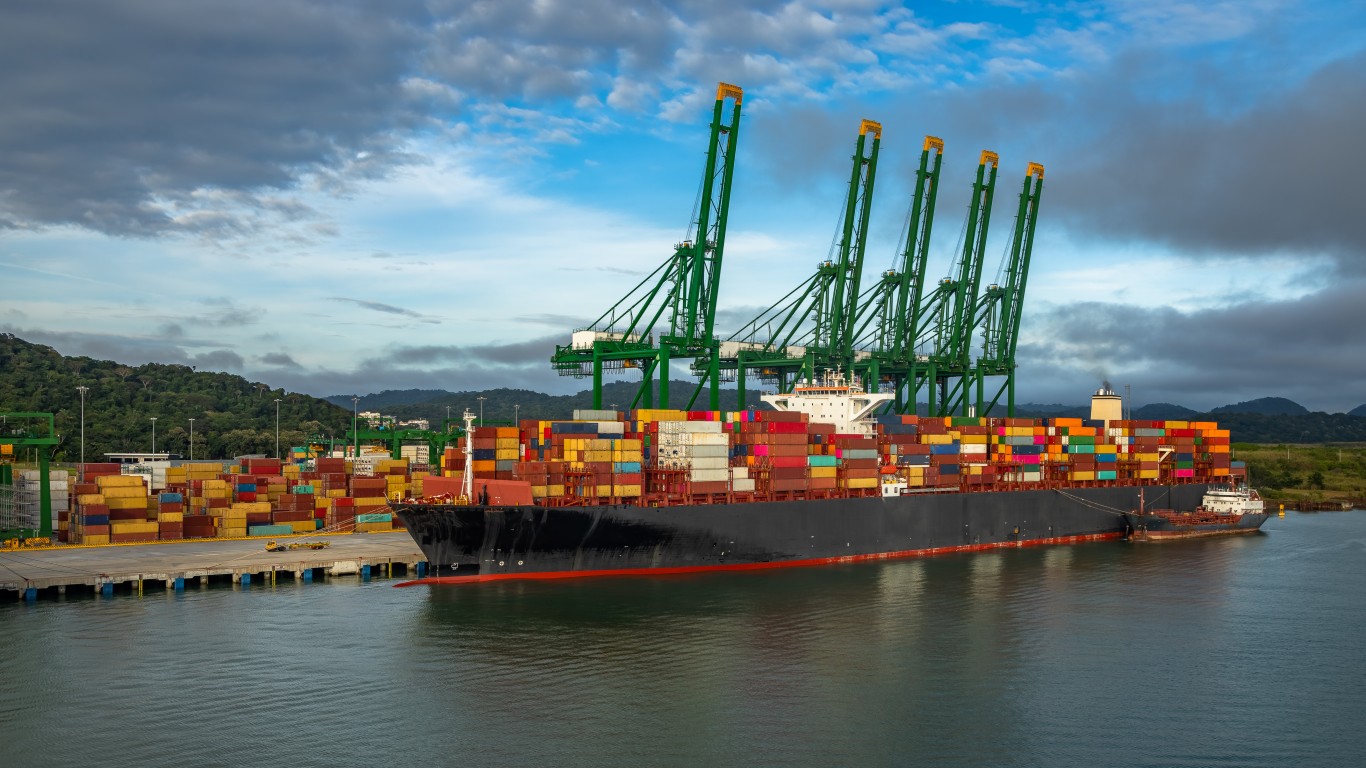 24/7 Wall St.
24/7 Wall St.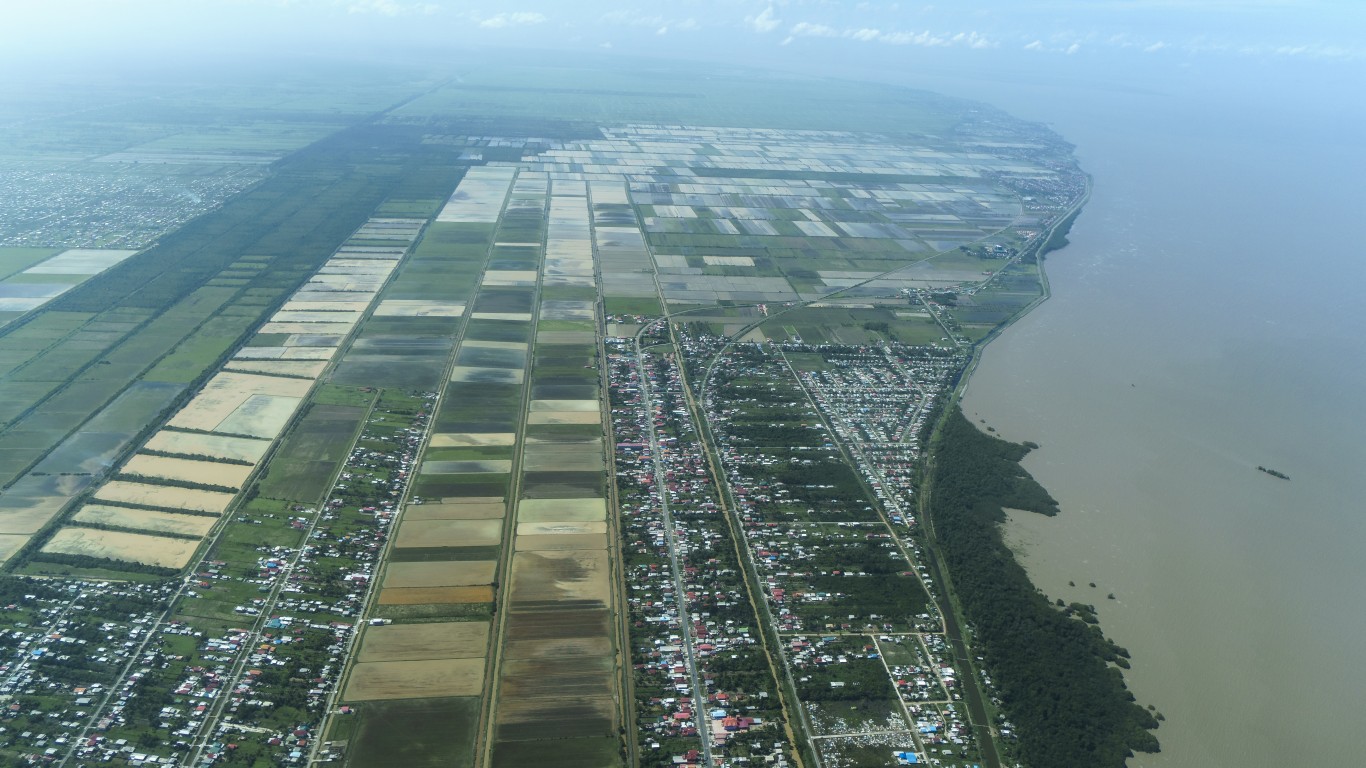
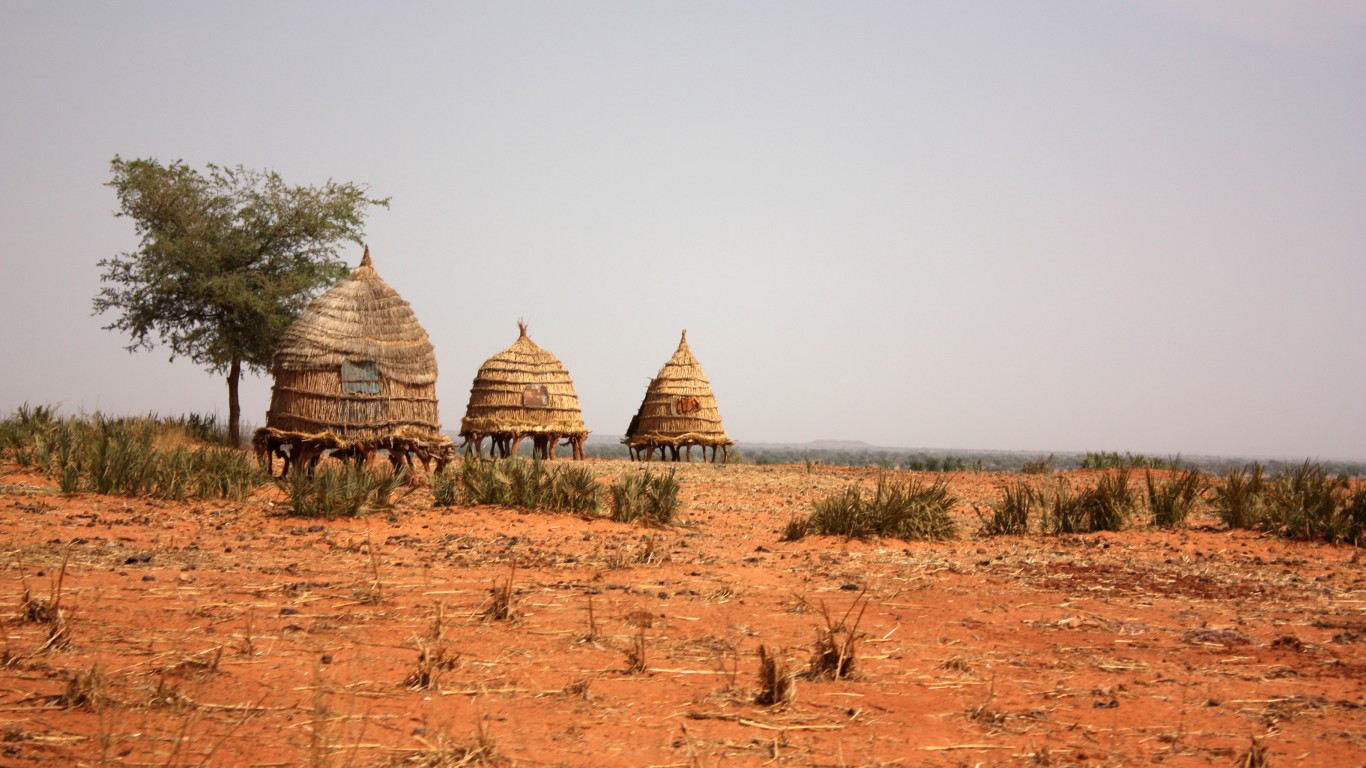 24/7 Wall St.
24/7 Wall St.

